September 9, 2025

The article titled "10 Free RBT Study Guide Tips to Ace Your Exam" emphasizes effective strategies and techniques for preparing for the Registered Behavior Technician (RBT) exam. It likely includes insights into:
These elements are designed to enhance candidates' chances of success on the assessment, making it a crucial resource for aspiring RBTs.
In the competitive landscape of applied behavior analysis, aspiring Registered Behavior Technicians (RBTs) encounter a pivotal challenge: mastering the RBT exam to secure their credentials and propel their careers forward. This article reveals ten essential tips designed not only to streamline exam preparation but also to significantly enhance the likelihood of success. As candidates navigate the complexities of the exam format and content, one critical question emerges: how can they effectively harness available resources and strategies to maximize their performance and confidence on test day?
In an era where the demand for Board Certified Behavior Analysts (BCBAs) is soaring, utilizing [Hire ABA](https://hireaba.today) can significantly streamline your job search as an RBT. This platform employs advanced , connecting you with top-tier job opportunities tailored to your qualifications and career aspirations. Are you struggling to find roles that align with your expertise? Hire ABA focuses exclusively on the ABA field, ensuring that you discover positions that truly match your skills, making the hiring process more efficient and supportive.
With comprehensive support and personalized guidance throughout the application to negotiation stages, you can enhance your job search experience. Imagine connecting with potential employers who value your skills and training. Hire ABA not only simplifies the recruitment process but also empowers you to take control of your career trajectory. Don't miss out on the opportunity to elevate your professional journey—explore what Hire ABA can do for you today.
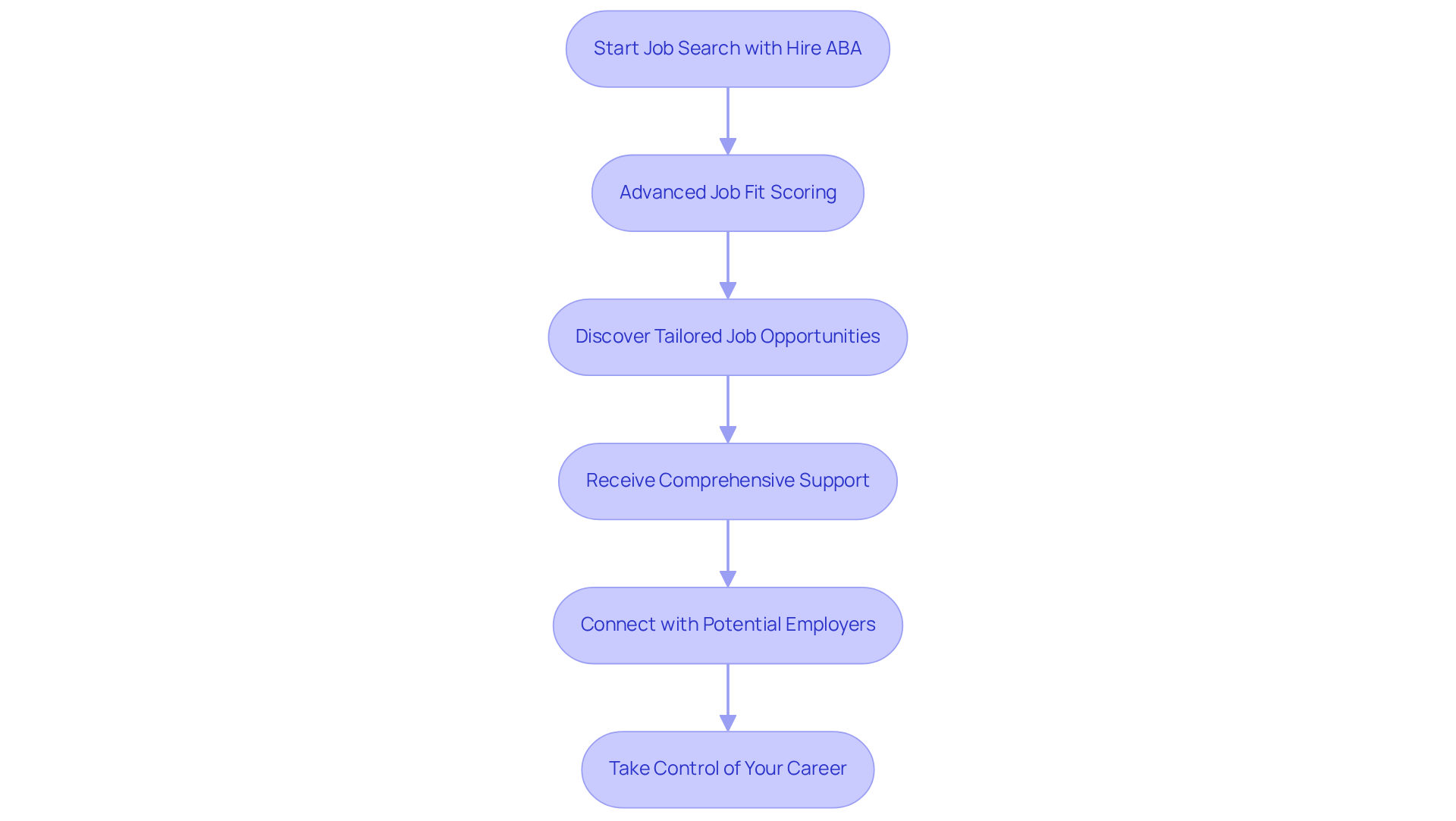
The RBT assessment comprises 85 multiple-choice questions, including 75 scored items and 10 unscored pilot questions. Candidates are allotted 90 minutes to complete the test, which evaluates knowledge across six critical domains:
Notably, the Skill Acquisition section constitutes 32% of the assessment, underscoring its significance in preparation. Understanding the assessment framework is essential; as Daniel Carter states, "Effective oversight can create a substantial impact on a participant’s preparation and confidence levels, particularly when striving for the RBT assessment passing score."
Furthermore, the RBT assessment represents a pivotal step for professionals seeking to validate their skills in applied behavior analysis (ABA). Familiarizing yourself with the assessment format not only aids in time management but also bolsters confidence, enabling candidates to approach the test with a strategic mindset.
With a pass rate of 74% in 2023, success stories illustrate that those who invest time in often excel, reinforcing the notion that preparation is critical for achieving a passing score. To enhance your preparation, consider developing a study schedule that emphasizes these key areas, utilizing the rbt study guide free.

The RBT Task List is essential for success in assessments, detailing the fundamental skills required. It covers critical areas such as:
Familiarity with each task, along with an understanding of its practical applications in real-world scenarios, is vital for excelling. Regularly reviewing the task list and actively refining these skills during learning sessions significantly boosts readiness for the assessment. Mastery of these competencies is crucial, as they directly correlate with the success rates of candidates who effectively integrate the RBT Task List into their study strategies, particularly when utilizing the RBT study guide free.
With the typically ranging between 70% and 80%, thorough preparation is imperative. As Fayge Orzel emphasizes, "To enhance your chances of passing the RBT assessment on your first attempt, make thorough preparation a top priority."
Candidates should focus on the six core areas included in the RBT assessment:
A structured preparation plan that incorporates the RBT study guide free elements is key to achieving high pass rates.

Incorporate practice assessments into your preparation routine to enhance your test-taking abilities. These closely mimic the actual RBT test structure and timing, allowing you to evaluate your understanding and identify areas needing further study. Consider utilizing resources like Mometrix and various online platforms to access a diverse range of practice questions. After completing these assessments, analyze your results to focus your efforts on weaker areas, ensuring a comprehensive and effective preparation strategy.
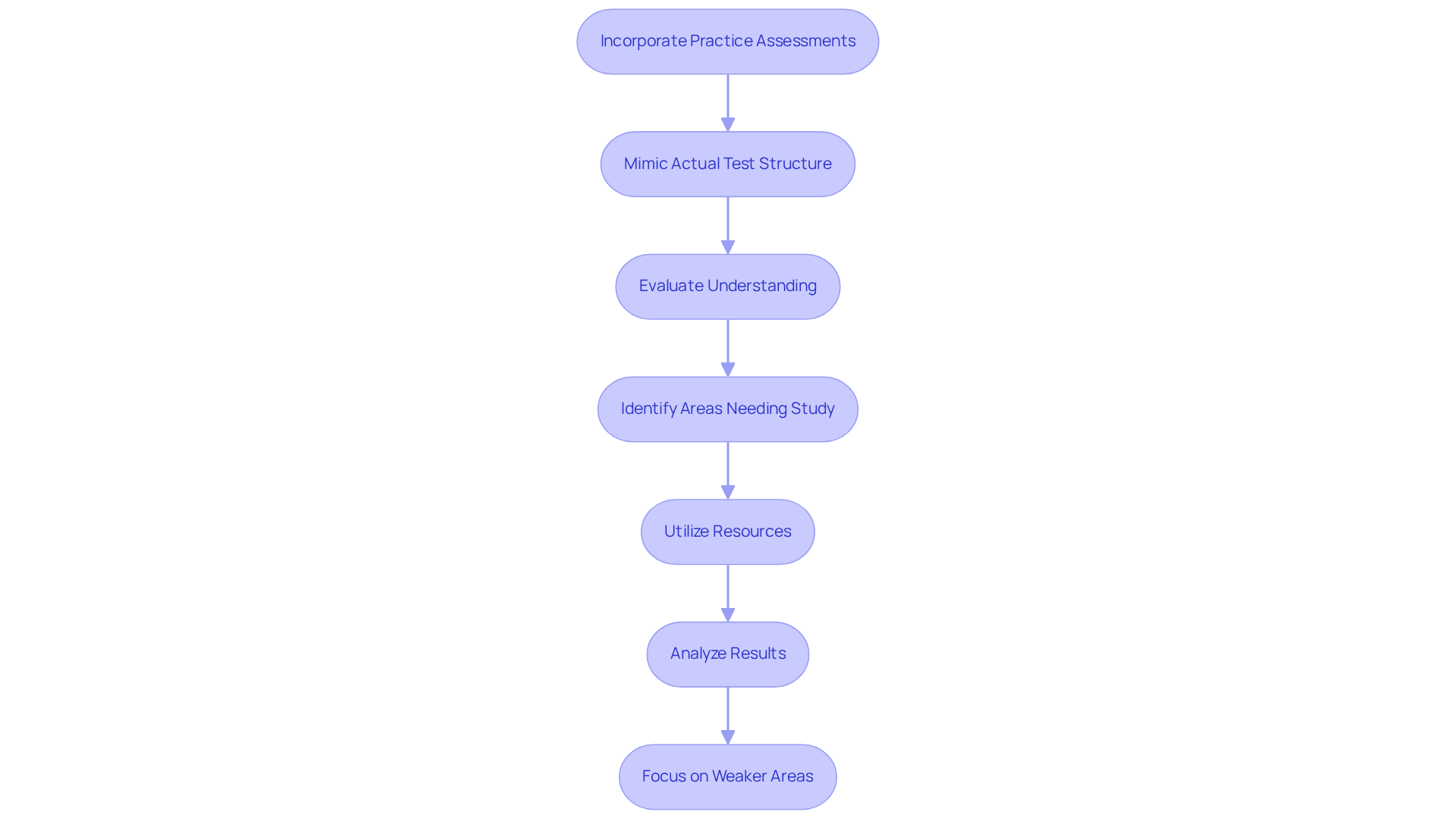
To enhance your learning and retention for the RBT exam, it is essential to adopt effective techniques such as spaced repetition, active recall, and distributed practice, alongside using an rbt study guide free. Spaced repetition involves reviewing material at increasing intervals, significantly improving long-term retention. Active recall encourages you to actively retrieve information from memory, reinforcing your understanding of key concepts. Distributed practice, which spaces out learning sessions over time, is another effective method for enhancing retention. Implementing the Pomodoro technique can also be beneficial; this method involves studying in focused bursts followed by short breaks, helping to maintain concentration and prevent burnout.
Establishing a structured learning timetable that designates specific times for each subject is crucial. Incorporate regular breaks to recharge your mind and enhance productivity. Utilizing for key terms and concepts can facilitate active recall, making it easier to remember important information.
Furthermore, have you considered how group discussions can significantly influence your success rates on assessments? Engaging with peers allows for diverse perspectives and explanations, deepening your understanding of the material. Numerous accomplished RBT participants have stated that the RBT study guide free, along with cooperative learning sessions, not only made the process more enjoyable but also enhanced their confidence and readiness for the assessment. For example, one applicant remarked, 'Studying with others helped me understand concepts I struggled with alone.' By incorporating these tactics into your learning schedule along with the rbt study guide free, you can enhance your educational potential and boost your likelihood of succeeding in the RBT assessment.
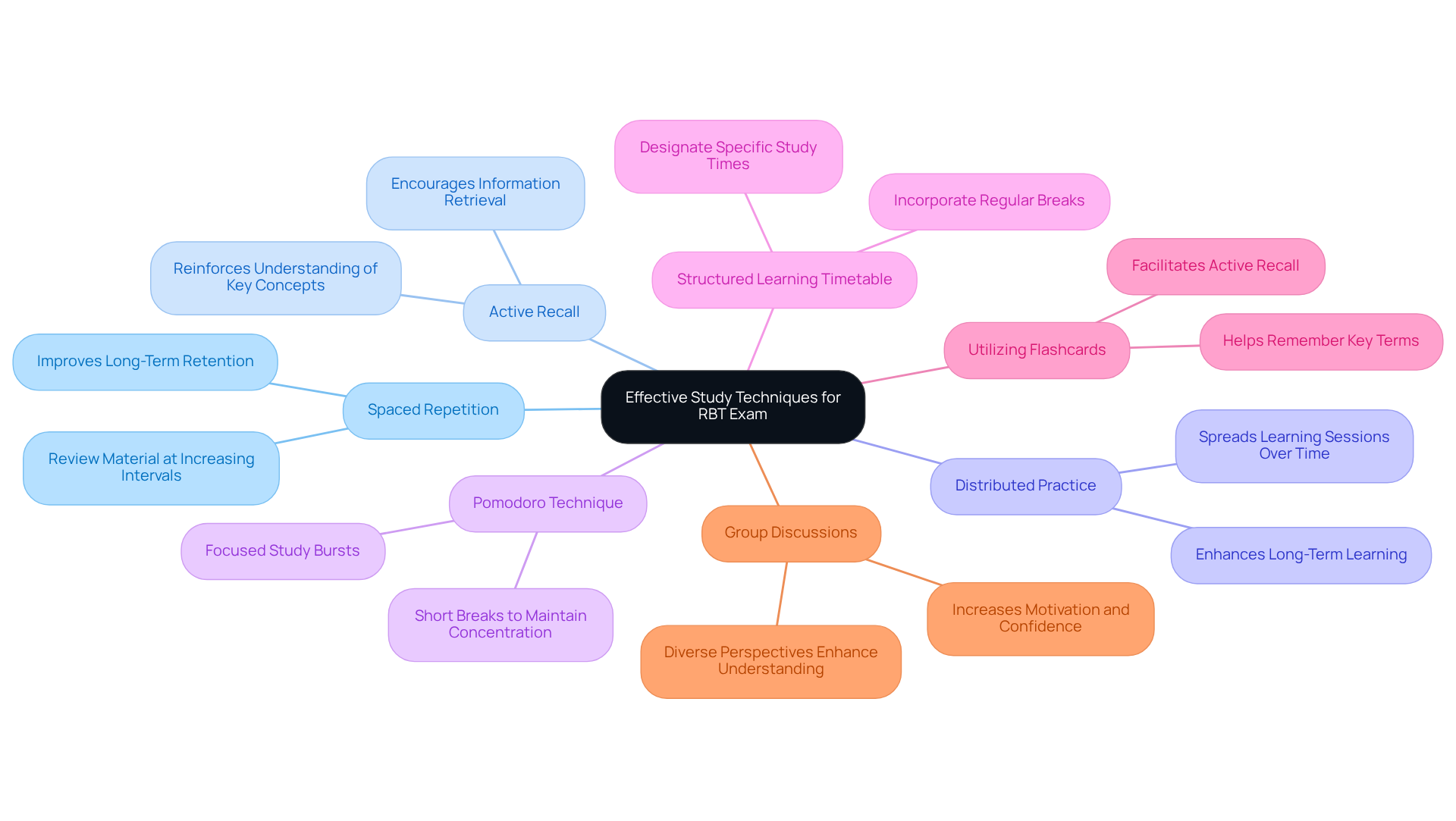
Efficiently managing test anxiety is crucial for optimal performance. Incorporating relaxation techniques such as deep breathing, visualization, and mindfulness meditation into one's preparation routine can significantly enhance testing outcomes. Research indicates that these methods effectively reduce stress levels, with studies showing that individuals practicing deep breathing can improve focus and decrease anxiety by up to 30%.
Establishing a pre-exam routine that includes light exercise and positive affirmations can further bolster confidence and mental readiness. On exam day, arriving early allows individuals to acclimate to the testing environment. Taking a few moments to engage in can center thoughts and maintain focus.
Success stories from individuals employing these strategies underscore their effectiveness in managing anxiety and achieving desired results. For instance, one applicant reported a notable reduction in anxiety after integrating mindfulness meditation into their preparation. By prioritizing these techniques, individuals can enhance their calmness and performance during tests.
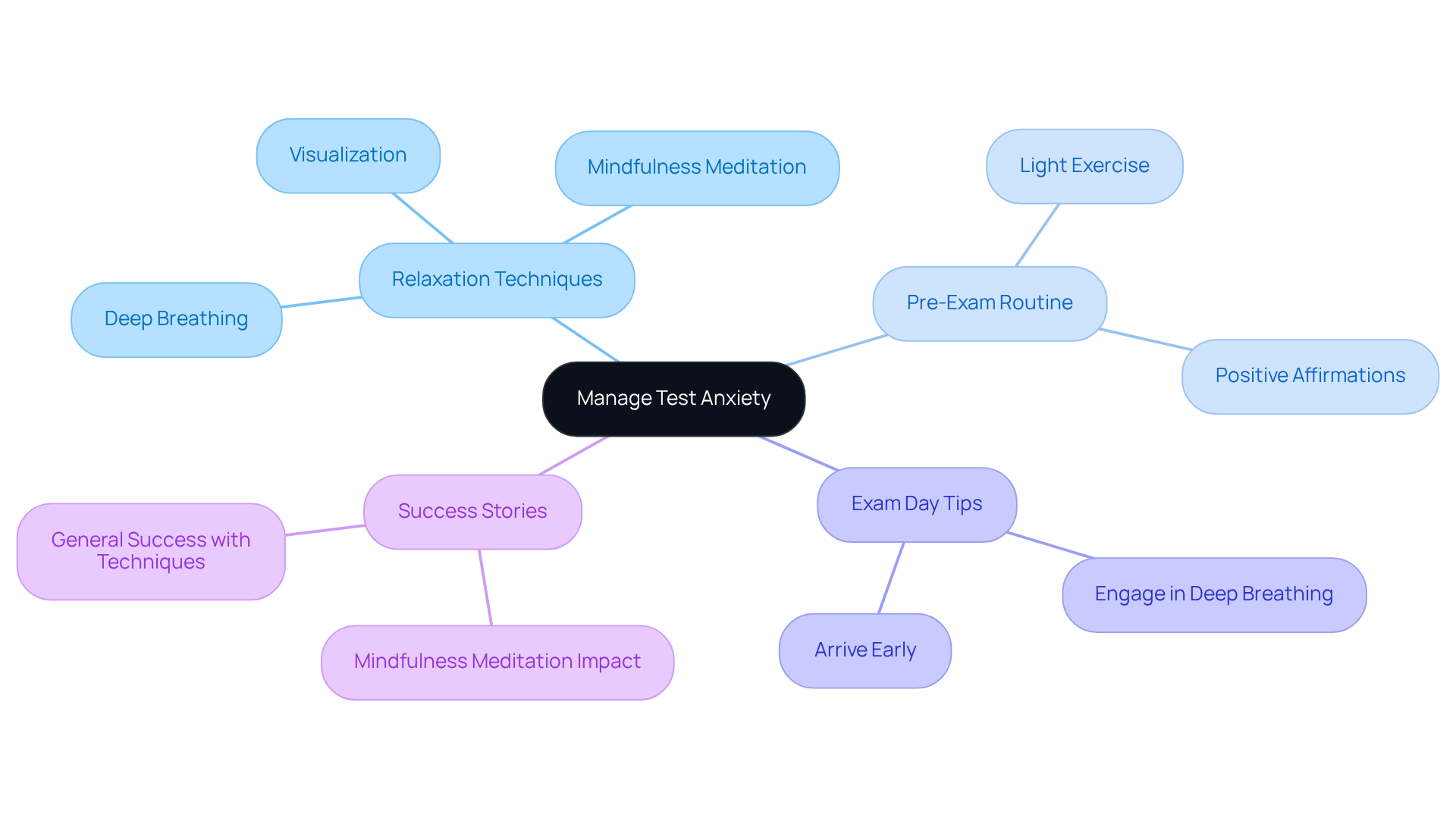
Effective time management is crucial during the RBT assessment, especially when utilizing the rbt study guide free. Candidates should consistently monitor the clock, aiming to spend no more than one minute per question. Successful RBT participants often report this pacing strategy as effective.
When faced with a challenging question, it is advisable to and proceed to maintain momentum. This approach not only aids in completing all questions within the allotted time but also alleviates the anxiety associated with difficult questions.
Instructors emphasize that employing these pacing methods and utilizing the rbt study guide free can significantly enhance test-takers' performance, ensuring they achieve their full potential on assessment day. Moreover, candidates should allocate time at the end of the test to review their responses, as this practice can help identify any discrepancies or mistakes prior to submission.
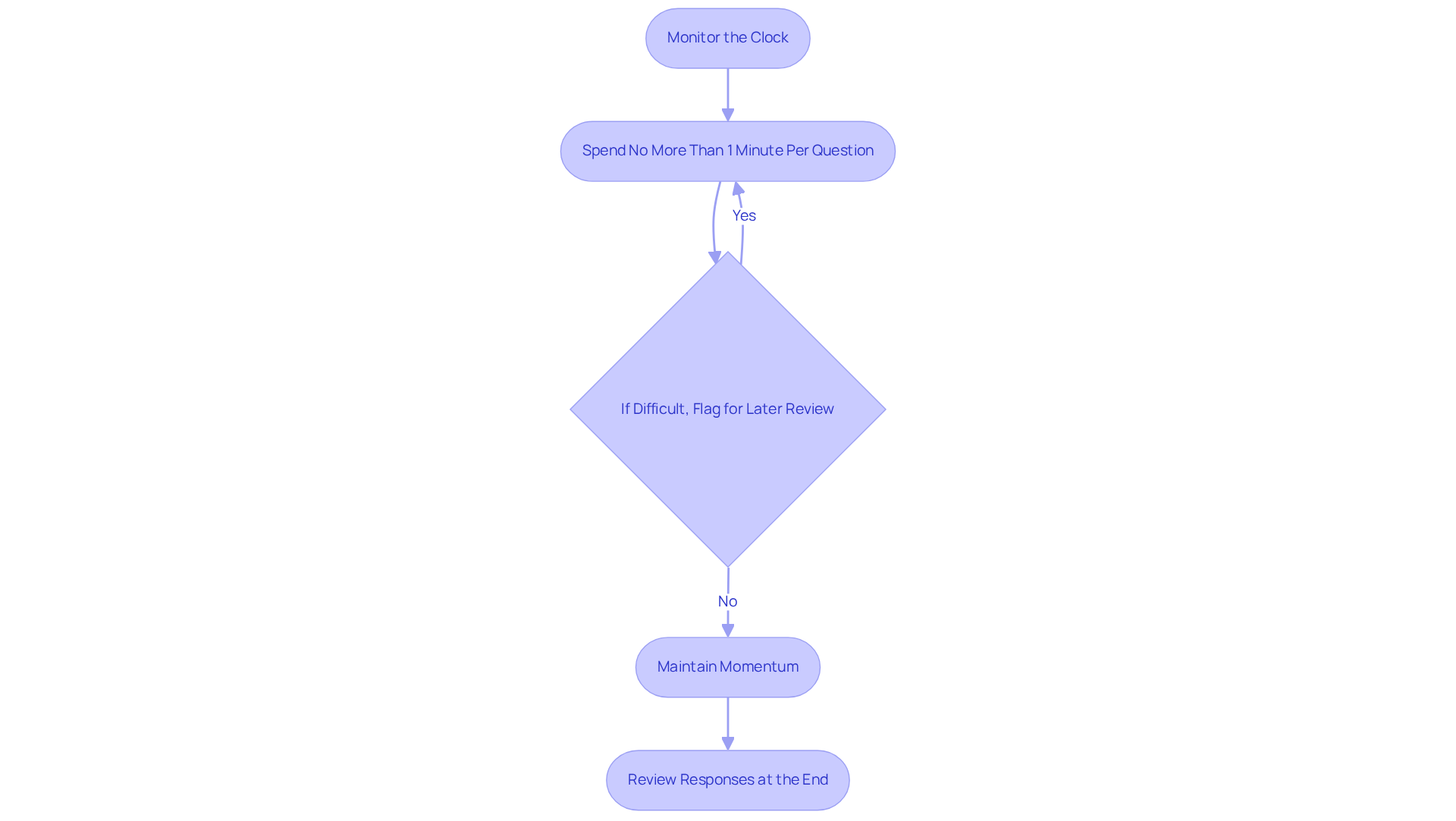
After completing practice tests, it is crucial to thoroughly review your responses.
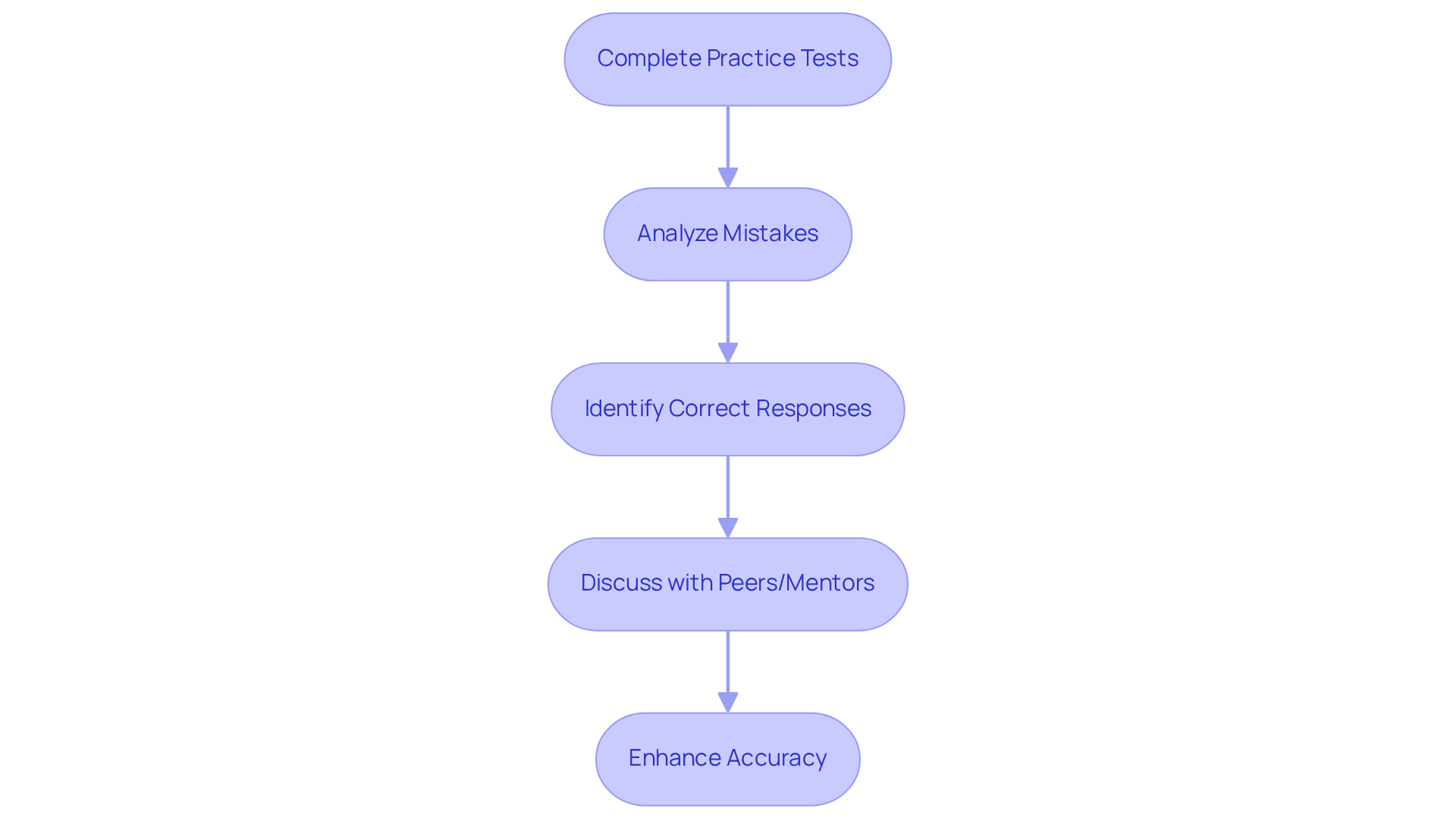
Prioritize sufficient rest in the days leading up to the test. Aim for 7-9 hours of sleep each night. Research indicates that consistent sleep patterns significantly enhance cognitive performance. For instance, students with a half-hour more night-to-night variation in total sleep time had grades that dropped 45% below those with less variation. On the night prior to the test, avoid cramming. Instead, participate in calming activities to help your mind relax. As Professor Jeffrey Grossman notes, "When you go to bed matters," emphasizing the importance of quality sleep. This approach not only prepares you mentally but also . Success narratives from candidates who valued rest demonstrate that a well-rested mind can lead to enhanced performance. Therefore, sleep is a crucial element of your assessment strategy.
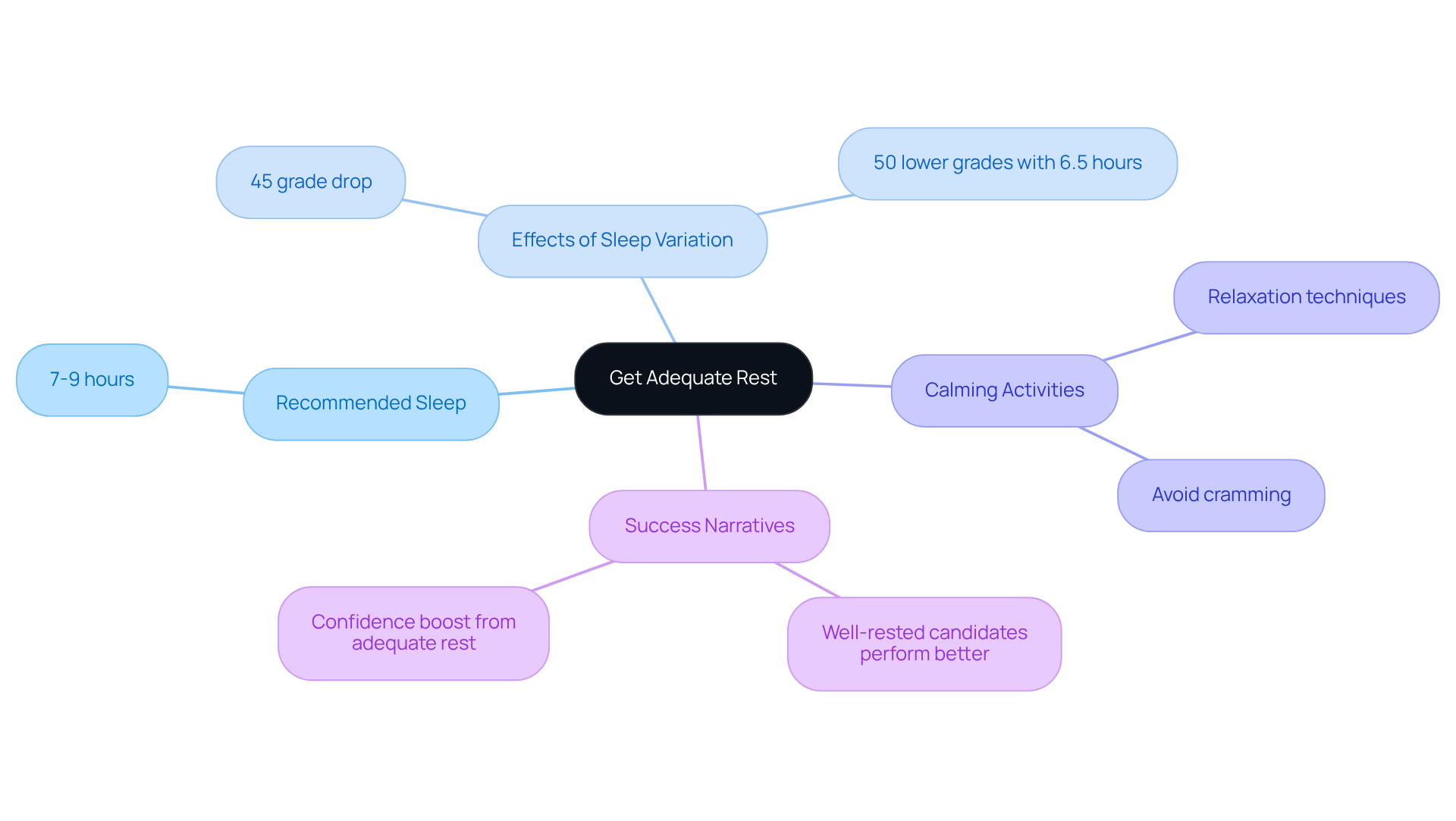
Upon completion of the , you will receive an email notification from the BACB confirming your results. Should you pass, detailed instructions for obtaining your certification will follow. Conversely, if you do not pass, you will have the opportunity to retake the exam after a specified waiting period.
It is crucial to familiarize yourself with the certification maintenance requirements; this ensures compliance and supports your ongoing professional development in the field.
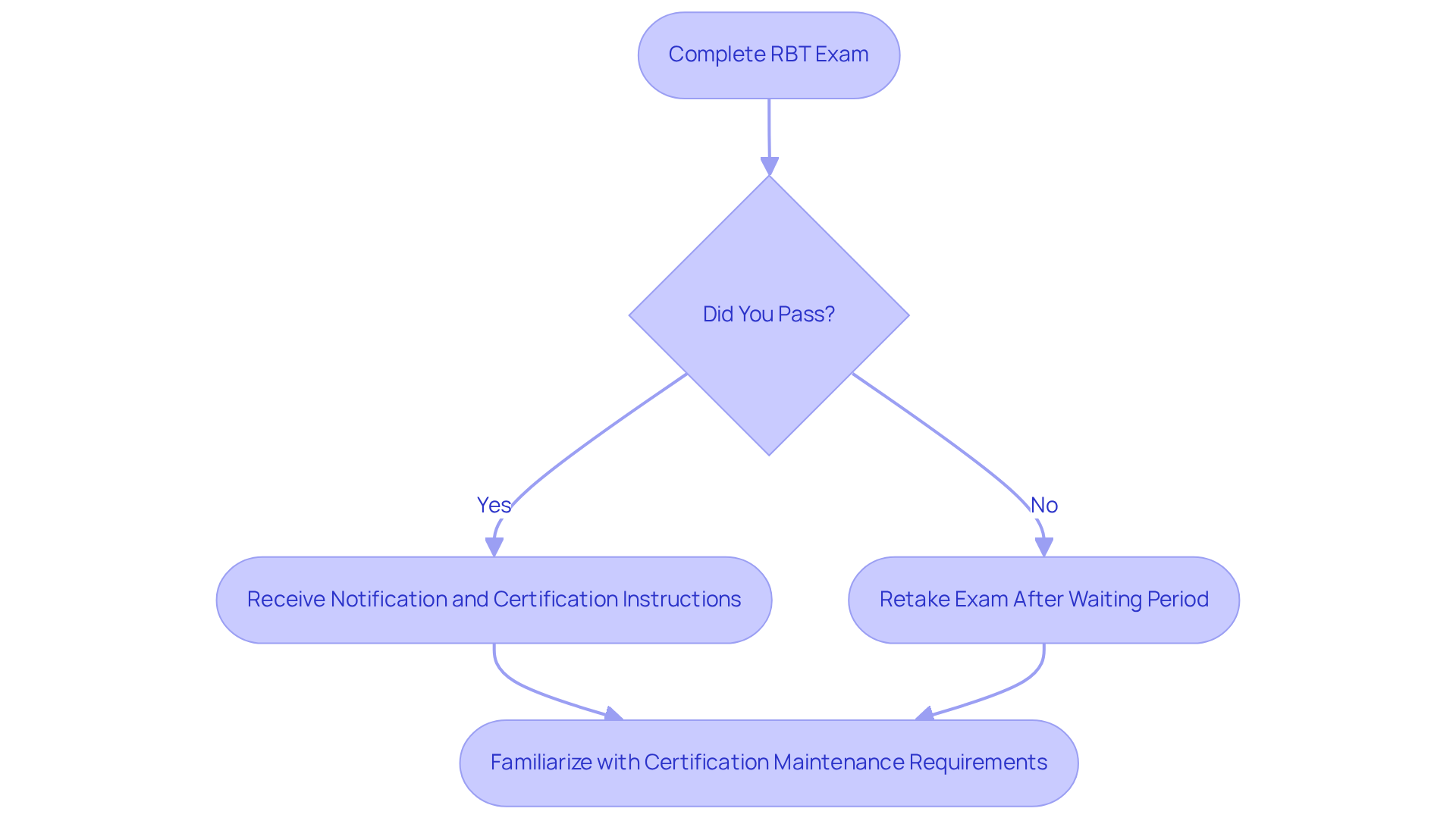
Preparation for the RBT exam is a multifaceted process that demands a strategic approach to ensure success. By leveraging effective study techniques, understanding the exam format, and actively engaging in practice assessments, candidates can significantly enhance their readiness. The incorporation of resources like the RBT study guide and platforms such as Hire ABA provides tailored support for job searching and exam preparation, making the journey smoother and more efficient.
Key insights discussed throughout this article highlight the importance of:
Are you aware of your current test preparation strategies? Candidates are encouraged to:
Each of these elements plays a critical role in building confidence and competence, ultimately leading to a higher likelihood of passing the exam.
In conclusion, the journey to becoming a Registered Behavior Technician is not solely about passing an exam; it is about laying a strong foundation for a rewarding career in applied behavior analysis. By adopting these study strategies and utilizing available resources, aspiring RBTs can not only prepare effectively for their exam but also position themselves for success in their future roles. Take action today by implementing these tips, and empower your path toward becoming a certified RBT.
What is Hire ABA and how can it help Registered Behavior Technicians (RBTs)?
Hire ABA is a platform designed to streamline the job search for Registered Behavior Technicians by employing advanced job fit scoring to connect them with top-tier job opportunities tailored to their qualifications and career aspirations.
What support does Hire ABA provide during the job search process?
Hire ABA offers comprehensive support and personalized guidance throughout the application to negotiation stages, enhancing the overall job search experience for RBTs.
What does the RBT exam consist of?
The RBT exam comprises 85 multiple-choice questions, including 75 scored items and 10 unscored pilot questions, and candidates have 90 minutes to complete it.
What are the six critical domains evaluated in the RBT assessment?
The six critical domains are Measurement, Assessment, Skill Acquisition, Behavior Reduction, Documentation and Reporting, and Professional Conduct.
How important is the Skill Acquisition section in the RBT assessment?
The Skill Acquisition section constitutes 32% of the assessment, highlighting its significance in preparation for the exam.
What is the pass rate for the RBT assessment in 2023?
The pass rate for the RBT assessment in 2023 was 74%.
What is the RBT Task List and why is it important?
The RBT Task List outlines the essential skills required for success in the RBT assessments, covering areas such as data collection, behavior reduction strategies, and ethical considerations.
What should candidates focus on to enhance their chances of passing the RBT exam?
Candidates should focus on mastering the six core areas of the RBT assessment and regularly reviewing the RBT Task List while utilizing study guides to prepare effectively.
What is the average pass rate for first-time RBT exam takers?
The average pass rate for first-time RBT exam takers typically ranges between 70% and 80%.
Our expert recruitment strategies and AI-driven sourcing ensure that you receive top-notch candidates quickly, without compromising on quality. Whether you’re looking for BCBAs, Clinical Directors, or RBTs, we’ve got you covered.